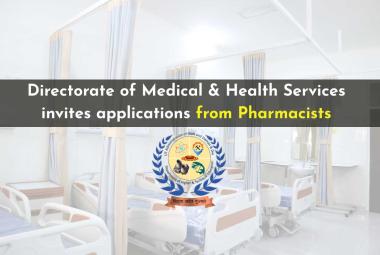{ DOWNLOAD AS PDF }
 ABOUT AUTHORS
ABOUT AUTHORS
U.Swathi lakshmi1, K.Revathi1 , Dr.P.Shailaja1, Prof.J.Vijaya Ratna1, Blessy A. Daniel2, Dr.Prashanth.S.2
1Andhra University College of Pharmaceutical Sciences, Visakhapatnam
2S3V Vascular technologies Pvt.Ltd, Bangalore
ABSTRACT:
The New Medical Device Regulations of European Union replace the E.U’s current Medical Device Directive (93/42/EEC) and the E.U’s Directive on Active Implantable Medical Devices (90/385/EEC) According to the draft document, NB’s would be placed under a strict regimen of super vision, although it remains unclear whether the intended sanctions could be implemented against the will of a Member State, should the need occur. The qualification requirements for auditing and reviewing NB staff are steeply increased. Greater emphasis will be placed on clinical data and the Clinical Evaluation. For implantable medical devices and Class III devices clinical investigations will be expected since equivalence will generally no longer be an acceptable approach, although some exceptions can be made. The proposed MDR attempts to make more transparent the periods for review by various parties for different activities. Implementation of Unique device identification helpful for the unambiguous identification of a specific device on the market.
[adsense:336x280:8701650588]
Reference Id: PHARMATUTOR-ART-2562
|
PharmaTutor (Print-ISSN: 2394 - 6679; e-ISSN: 2347 - 7881) Volume 6, Issue 2 Received On: 09/10/2017; Accepted On: 20/11/2017; Published On: 01/02/2018 How to cite this article: Lakshmi US, Sowjanya K, Revathi K , Shailaja P, Ratna JV, Daniel BA, Prashanth S; A Review on European Union New Medical Device Regulations-2017; PharmaTutor; 2018; 6(2); 9-14; http://dx.doi.org/10.29161/PT.v6.i2.2018.9 |
INTRODUCTION:
Ranging from simple sticking plasters and contact lenses to sophisticated pacemakers and hip replacements, cardiac stents medical devices and in vitro diagnostic medical devices are important to our health and quality of life. People rely on these devices every day and expect them to be safe and incorporate the latest progress in science and innovation. Medical devices within the EU are currently regulated by the following 3 directives
• Council Directive 90/385/EEC on Active Implantable Medical Devices (AIMDD) (1990)
• Council Directive 93/42/EEC on Medical Devices (MDD) (1993)
• Council Directive 98/79/EC on In Vitro Diagnostic Medical Devices (IVDMD) (1998)
The Commission has adopted several implementing measures based on the Medical Devices Directives and released new medical device regulations. The attempt is made to concentrate the harmonization effects between member states of European union by means of a new regulations body called the Medical Device Coordinate Group (MDCG).The new Regulations on medical and in-vitro diagnostic medical devices proposed by the Commission in 2012 will help to ensure that all medical devices from heart valves to sticking plasters to artificial hips are safe and perform well. To address this, the new rules will improve market surveillance and traceability as well as make sure that all medical devices are designed to reflect the latest scientific and technological state-of-the art. The rules will also provide more transparency and legal certainty for producers, manufacturers, importers, and help to strengthen international competitiveness and innovation in this strategic sector. Compared to medical device Directive the medical device regulations promotes shifts from the preapproval stage (i.e. path to CE marking) to life cycle approach.
SIGNIFICANT CHANGES IN FRONT OF MEDICAL DEVICE MANUFACTURER
Medical device manufacturers confronted with major changes in the EU’s decades-old regulatory framework, which governs market access to the European Union (EU). The MDR replace the EU’s current Medical Device Directive (93/42/EEC) and the EU’s Directive on active implantable medical devices (90/385/EEC). The Medical Device Regulations in May 26th 2017, the Manufacturer of currently approved medical devices will have a transition period of three years until May 26th 2020 to meet the requirements of the MDR.
BELOW IS AN ESTIMATED TIMELINE FOR THE MDR BASED ON CURRENT ASSUMPTIONS.
|
THE TIMELINES FOR THE MDR |
|
|
Medical Device Regulation (MDR) published in the Official Journal of the European Union (OJEU) |
26th May 2017 |
|
Notified Bodies (NBs) may issue certificates under the MDD or AIMDD with a maximum validity of 5 years |
26th May 2017 to 26th May 2020 |
|
NBs may apply for MDR designation |
26th November 2017 |
|
Certificates issued in accordance with Annex 4 of AIMDD and Annex IV of MDD (EC-type verifications) that have not yet expired will become void |
26th May 2019 |
|
Official "Date of application" of the MDR |
26th May 2020 |
|
MDD Annex IV certificates expire |
27th May 2022 |
|
Other certificates issued under current Directives that have not yet expired will become void |
26th May 2024 |
|
Devices that were CE Marked under the MDD or AIMDD may no longer be marketed or put into service in Europe |
26th May 2025 |
The new Regulations contain a series of extremely important improvements to modernize the current system. Among them are:
• Stricter ex-ante control for high-risk devices via a new pre-market scrutiny mechanism with the involvement of a pool of experts at EU level;
• The reinforcement of the criteria for designation and processes for oversight of Notified Bodies;
• Improved transparency through the establishment of a comprehensive EU database on medical devices and of a device traceability system based on Unique Device Identification;
• The introduction of an “implant card” containing information about implanted medical devices for a patient;
• The reinforcement of the rules on clinical evidence, including an EU-wide coordinated procedure for authorisation of multi-centre clinical investigations
• The strengthening of post-market surveillance requirements for manufacturers;
• Improved Coordination mechanisms between EU countries in the fields of vigilance and market surveillance
KEY CHANGES IN THE NEW MEDICAL DEVICES REGULATIONS, EU
The proposed MDR differs in several important ways from the EU’s current directives for medical devices and active implantable medical devices. The most significant changes in the proposed regulation include:
PRODUCT SCOPE EXPANSION:
The definition of medical devices and active implantable medical devices covered under the MDR will be significantly expanded to include devices that may not have a medical intended purpose, such as colored contact lenses and cosmetic implant devices and materials. Also expected to be included in the scope of the regulation are devices designed for the purpose of “prediction” of a disease or other health condition.
NEW DEFINITIONS – PLACING ON THE MARKET IS NOW EXPRESSLY COMMERCIAL:
There are hosts of new definitions including of course for medical device, custom-made device and for making available on the market. Placing a device on the market is now defined to be something that takes place as part of a commercial activity (whether for charge or for free). It remains to be seen whether this will provide a loophole for organizations such as charities. The definition of serious adverse event is expanded to specifically include hospitalization, medical or surgical interventions to prevent life threatening injury or illness, chronic disease, foetal distress, foetal death or a congenital physical or mental impairment or birth defect, Nanomaterials are also explicitly defined in terms or particle sizes and proportions of agglomerates, as well as Fullerenes, graphene flakes and single-wall carbon nanotubes with one or more external dimensions below 1 nm deemed to be Nanomaterials.
RECLASSIFICATION OF DEVICES ACCORDING TO RISK, CONTACT DURATION AND INVASIVENESS:
As expected, there is a lot of tweaking of the classification rules in the light of experience. Active Implants are pragmatically merged with an expanded Class III, which includes a range of other devices including surgical meshes, Spinal implants (except screws and plates), IVF Media and media for transplant organs or tissues. All active implants and their controllers or monitors, All devices in direct contact with the heart or central circulatory system regardless of duration Nanomaterials with high potential for internal exposure (others are IIb/IIa) Active devices with significant patient management function (e.g. Automatic External Defibrillator). Wound dressing rules now make explicit reference to devices, which come into contact with skin (or) mucous membrane. There’s also a new special subclass of ClassI. The familiar measuring function and sterile Class I(m) and I(s) remain. But now reusable surgical instruments are required to be assessed by a Notified Body specifically in relation to their cleaning and sterilization.
NOW YOU CAN ALSO PUBLISH YOUR ARTICLE ONLINE.
SUBMIT YOUR ARTICLE/PROJECT AT editor-in-chief@pharmatutor.org
Subscribe to Pharmatutor Alerts by Email
FIND OUT MORE ARTICLES AT OUR DATABASE
THE GENERAL SAFETY AND PERFORMANCE REQUIREMENTS:
Out with the old essential requirements the new Annex I bring a much more detailed set of requirements, which at times become very specific. There are new requirements relating to software, devices incorporating medicines or biological origin materials, and risks associated with lay use of devices. The requirements for sterile devices and for biological safety are both considerably expanded, with specific requirements related to specified carcinogens, endocrine disruptors and phthalates. The old Essential Requirement 13 on labeling is expanded to a complete Chapter III in the new text. The new Regulations retain reference to harmonized standards, but also add in relevant parts of the European pharmacopoeia.
IDENTIFICATION OF “QUALIFIED PERSON”:
Device manufacturers will be required to identify at least one person within their organisation who is ultimately responsible for all aspects of compliance with the requirements of the new MDR. The organisation must document the specific qualifications of this individual relative to the required tasks.
STRONGER NOTIFIED BODY OVERSIGHT:
One of the central pillars of the European reforms has been the strengthening of the oversight and capacity of Notified Bodies. The new regulations bring a much more rigorous designation process, with multiple parties involved in the designation process to ensure consistency and transparency. All Notified Bodies are required to re-apply for designation, with a lengthy review process likely to take at least 18 months.
RISK MANAGEMENT:
Risk management concepts are embedded throughout the regulations. Students of the controversy over the Annexes to ISO 14971 will be relieved to learn that the essential requirements introduce a more pragmatic approach. The Annex I, Chapter I General Requirements deal at length with risk stating risks are required to be acceptable when weighed against the benefits to the patient” and going on to state that Manufacturers shall manage risks so that the residual risk associated with each hazard as well as the overall residual risk is judged acceptable. Along with the risk management, the new medical device regulations grant special power to notified bodies for increasing post market surveillance activities, it strengthen the European Union enforcement regime and help to reduce risk from unsafe devices. Sometimes in case of class III Devices annual safety report may require.
CLINICAL EVALUATION, POST MARKET FOLLOW UP AND IDENTIFICATION OFRESIDUAL RISK:
The strengthening of clinical requirements has long been anticipated. The Final text retains the explicit requirements for clinical evaluation of all devices irrespective of class and is specific that clinical evaluation shall include consideration of all information sources including pre-clinical data, risk management, literature and direct clinical experience. Class III devices are required to have direct clinical trial data except in the specific circumstance of design iterations from a previous device where a justification can be provided based on review of testing or by comparison with another manufacturer’s devices as a predicate but only if the other manufacturer will provide complete and perpetual access to the technical file information of the predicate. For preparing the clinical evaluation report well trained personals like biostatisticians, medical writers, product specialist and clinician who must sign off the report. Annual review of clinical evaluation must be takes place (especially for class III) and the reviews used to recalibrate risk management files. All class III devices, any device, which depends on predicate comparisons, must be subject to active post market clinical follow up, and again the information gained must feed into risk management review.
IMPLEMENTATION OF UNIQUE DEVICE IDENTIFICATION:
The proposed MDR mandates the use of Unique Device Identification (UDI) mechanisms. The UDI is a series of numbers or alphabets followed by number characters that are created through a globally accepted device identification and coding standard. Easy traceability of device on the market. The UDI is comprised of the UDI-DI and the UDI-PI. This requirement is expected to increase the ability of manufacturers and Authorities to trace specific devices through the supply chain, and to facilitate the prompt and efficient recall of medical devices that have been found to present a safety risk with the help of Product & Device identifiers. In addition, the European Databank on Medical Devices (EUDAMED) is expected to be expanded to provide more efficient access to information on approved medical devices.
ECONOMIC OPERATORS – REGULATION FOR ALL:
The old MDD essentially provided requirements for manufacturers and their authorized representatives. The new Regulations introduce the concept of economic operator. That includes manufacturers, importers, distributors, market representatives, Notified Bodies, and the Regulations place specific requirements on each of these. Distributors and Importers are required to maintain detailed records and to actively participate in post market monitoring; European Representatives are to be held jointly and severally liable for safety of medical devices. Expect European commission representatives to insist on insurance cover and fees to be adjusted accordingly
REUSE OF SINGLE USE DEVICES AND IN-HOSPITAL MANUFACTURING:
There has been considerable debate in the development of the regulations about reprocessing of single use devices, with some European countries strongly in favour of reprocessing and others less so. The Regulations actively contemplate reprocessing activities but make it clear that commercial reprocessors are to be considered manufacturers and subject to the full force of the regulations. However, there is a get-out clause for hospitals – where national authorities are empowered to allow reprocessing within hospitals to be conducted to a lower standard – providing the devices are not transferred outside to that facility. Hospitals also get a break on making their own devices. Hospitals and clinics are specifically exempted from the Regulations provided they don’t supply anything they manufacturer outside of the hospital.
e-LABELING:
There are a lot of implications for the information in labels and instruction for use within the regulations. Physical labeling continues to be mandated as in the medical devices directives, but now there is a requirement that for manufacturers who operate a website, labeling information must also be published there. e-labeling is allowed as a supplement but not instead of physical labeling. Instructions for Use (IFU) may be in electronic form but must conform to Regulation (EU) no 207/2012 on electronic instructions for use of medical devices. The European commission will be providing further guidance on the labelling requirements in relation to device containing hazardous substances.
MANY NEW REPORTS TO BE REVIEWED:
Get used to some new acronyms. Manufacturers will need to prepare a Periodic Safety Update Report (PSUR), Post Market Clinical Follow Up (PMCF) reports and Summary of Safety and Clinical Performance. For higher risk devices these will need to be reviewed by the Notified Body (at a fee of course), along with updates to the Clinical Evidence Report. The exemptions from conformity for custom-made devices are very substantially removed. All class III implantable custom made devices will be required to undergo conformity assessment irrespective of quantity produced
SPECIFICATIONS:
The MDR plans to allow the EU Commission or expert panels to be defined to publish common specifications, which shall then be taken into account by manufacturers as well as Notified Bodies. These Common Specifications shall exist in parallel to the Harmonized Standards and the State of the Art.
NOW YOU CAN ALSO PUBLISH YOUR ARTICLE ONLINE.
SUBMIT YOUR ARTICLE/PROJECT AT editor-in-chief@pharmatutor.org
Subscribe to Pharmatutor Alerts by Email
FIND OUT MORE ARTICLES AT OUR DATABASE
HOW MANUFACTURER CAN PREPARE FOR ADOPTING THE NEW MDR:
The complex development process for most types of medical devices, combined with the need to address new regulatory requirements and obtain Notified Body approval, is likely to make the transition a complicated and time consuming process for most device manufacturers. Further, currently approved devices are not exempt from the requirements of the new regulation and will need to be re-evaluated and re-approved. Manufacturers of currently approved medical devices will have a transition time of three years until May 26th 2020 to meet the requirements of the MDR. Medical device manufacturers are well advised to stay current on the progress of the MDR through the legislative process, as well as additional changes that may impact them. In addition, since a large number of medical devices will now require Notified Body review and approval, delays in the review and approval process by Notified Body should be expected. Therefore, it is recommended that manufacturers of currently approved devices consult with their respective Notified Body to evaluate potential compliance issues and to develop a plan to address them promptly. Advanced preparation and early action will be key to ensuring a smooth transition to the new requirements.
CONCLUSION:
The European Medical Device Regulations (MDR 2017/745) and In Vitro Diagnostic Regulations (IVDR 2017/746) have been entered into force as of May 26, 2017. The Regulations’ entry into force is the last milestone before full implementation of the MDR in May 2020 and the IVDR in May 2022.The key changes of the E.U. medical device regulations are Control of high-risk devices such as implants involve also panels of independent experts at EU level, Clinical trials taking place in more than one Member State will be subject to a single coordinated assessment, Many aesthetic products are regulated as medical devices and subject to stricter controls, Four out of five in vitro diagnostic medical devices are checked by a Notified Body before they are placed on the market, European database contains extensive information on medical devices, most of which is publicly available. An "implant card" for implanted devices gives patients more information, A financial mechanism ensures patients are compensated in case defective medical devices harm them, Simplified procedure allows manufacturers to register their device only once at the EU level.
REFERENCES:
1. EUROPEAN COMMISSION (COD)Proposal For REGULATION OF THE EUROPEAN PARLIAMENT AND OF THE Council on Medical Devices, And Amending Directive 2001/83/EC, Regulation (EC) No 178/2002and Regulation (EC) No 1223/2009, Brussels 26.9.2012COM(2012) 542 Final2012/0266
2. European Commission, Industry Directorate-General Consumer Goods Cosmetics And Medical Devices guidelines On Medical Devices application Of Council Directive 93/42/Eec Taking Into Account The Commission Directive 2003/32/Ec For Medical devices Utilising Tissues Or Derivatives Originating From Animals For Which A Tse Risk Is Suspected a Guide For Manufacturers And Notified Bodies
3. EUROPEAN COMMISSIONDG HEALTH AND CONSUMER Directorate B, Unit B2 “Cosmetics and medical devices” MEDICAL DEVICES: Guidance document Classification of medical devices Guidelines Relating To The Application Of The Council Directive 93/42/Eec On Medical Devices Meddev 2. 4/1 Rev. 9 June 2010
4. GHTF/SG4/N83:2010 Final Document Global Harmonization Task Force Guidelines for Regulatory Auditing of Quality Management Systems of Medical Device Manufacturers Part 4: Multiple Site Auditing Study Group 4 of the Global Harmonization Task Force August 27, 2010
5. Interpretative document of the commission's services1implementation of directive 2007/47/EC amending directives 90/385/EEC, 93/42/EEC and 98/8/EC European Commission enterprise and industry directorate-general Consumer goods cosmetics and medical devices brussels,5 june 2009entr/f3/PBE /d(2009)19003.
6. Manual on borderline and classification in the community Regulatory framework for medical devices version 1.17 (09-2015)
7. Official Journal of the European Union COMMISSION IMPLEMENTING REGULATION (EU) No 920/2013 on the designation and the supervision of notified bodies under Council Directive 90/385/EEC on active implantable medical devices and Council Directive 93/42/EEC on medical devices of 24 September 2013
8. Official Journal of the European Union EN (1) Volume 59 C272 Information and Notices 26 July 2016
9. Official Journal of the European Union RECOMMENDATIONS COMMISSION RECOMMENDATION of 24 September 2013 on the audits and assessments performed by notified bodies in the field of medical devices(Text with EEA relevance) (2013/473/EU)
10. Official Journal of the European Union. L117 Legislation Volume 60. 5 May
11. OFFICIAL JOYRNAL OF EUROPEAN UNION COMMISSION REGULATION (EU) No 207/2012 of 9 March 2012 on electronic instructions for use of medical devices
NOW YOU CAN ALSO PUBLISH YOUR ARTICLE ONLINE.
SUBMIT YOUR ARTICLE/PROJECT AT editor-in-chief@pharmatutor.org
Subscribe to Pharmatutor Alerts by Email
FIND OUT MORE ARTICLES AT OUR DATABASE









